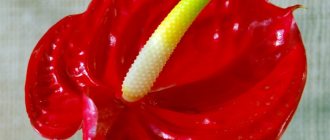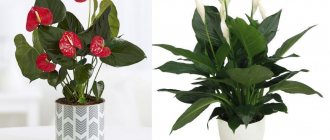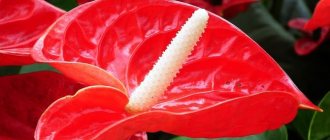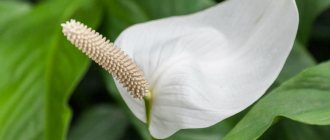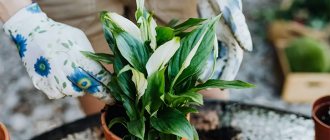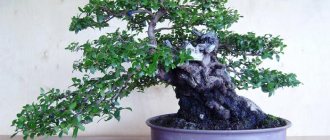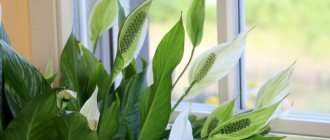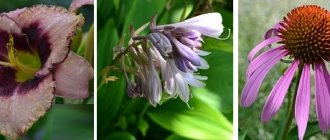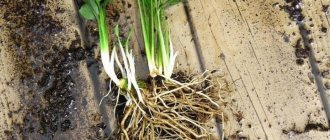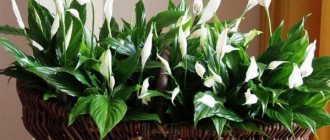Description of the bird
Flamingo in the water
Flamingo is a large waterfowl of the flamingidae family, the average body length is 140 centimeters, the wingspan is 120-160 centimeters, the weight is 2000-4500 grams.
Appearance
Flamingo walks on water
Flamingo birds have a unique body structure and plumage color. Flamingos are sociable wading birds, usually 90 to 150 centimeters in height with a barrel-shaped belly and a long, strongly curved neck. The flamingo's head is small with a large massive beak, strongly curved downwards in the middle part. Birds move on long stilted legs. The female flamingo is smaller than the male. The feather color of birds of different sexes is the same. The color range includes shades of pink - from white to burgundy. The legs of most bird species are yellow. The flight feathers and the tip of the beak are black.
What affects the color of a bird
Flamingos are looking for fish in the lake
- Advertisement -
The name Flamingo (from the Portuguese and Spanish word "flamengo"), meaning "fiery". The genus name Phoenicopterus (from the Greek word "phoinikopteros") means "red-feathered blood." The color of the bird's feathers and legs is obvious - pink. But not everyone knows why this happened. Newborn flamingo chicks are gray, with black legs and straight black beaks. The flamingo's color changes to pink during the first two years of life. The birds acquired this color of feathers and limbs thanks to beta-carotene.
Flamingos are omnivores that eat blue-green algae, insects, sea shrimp, crustaceans, and mollusks. Their food contains the natural pigment beta-carotene, which turns the birds' legs and feathers pink. The bright color is achieved due to the fat-like coloring substances lipochromes, which enter the bird’s body along with crustaceans and algae. In lakes where such “food” lives, the water turns pale pink. If the bird does not feed on crayfish, then the pigment will not be released - the color will turn white. In zoos, flamingos are fed carrots, which contain the yellow-orange plant pigment beta-carotene, which adds yellow-orange tones to their color.
Beak
Flamingo beak
The flamingo's beak is long, massive and strongly curved down in the central part. The mandible contains a large tongue, and the mandible covers it. In the upper part of the beak there are horny plates and denticles through which food and water are filtered. Flamingo searches for food in water at shallow depths. The bird grabs food by turning its head so that the beak is at the bottom. The beak works like a ladle, scooping up crustaceans along with mud. The flamingo then presses its tongue against the “palate”, filtering water, dirt and silt through the holes in the beak, and swallows the food. Flamingo eats upside down.
— Advertising —
The upper part of the beak is smaller than the lower and is mobile, which is unusual for most birds. In the early 1800s, naturalists argued that the upper part of the beak was movable, but the lower part was not. In 1957, Penelope M. Jenkin published a study, Philosophical Transactions of the Royal Society B, which contained the following information: both parts of the beak are movable independently of each other through hinged joints. When cleaning feathers, flamingos move the upper or lower part of their beak. When eating, the lower part of the beak is motionless, only the upper part moves. Watch the video for more details.
The color of the flamingo's beak depends on the type of bird: the Andean flamingo is white and black, the Red flamingo is coral and black, the Lesser flamingo is black, the Pink flamingo is pink and black, the Jace's flamingo is yellow and black and the Chilean flamingo is pink and black.
How many years do they live
According to the Basel Zoo, the average lifespan of flamingos in the wild is 40 years. The typical lifespan in captivity is more than 60 years.
White
Anthuriums with snow-white flowers, which create a special solemnity, are represented by these varieties.
Acropolis (Acropolis)
A flower with a distinctive feature of oval pointed leaves , large white bracts and a light yellow or pale peach spadix, at the top of which the color becomes brighter and more saturated.
White Champion
A compact plant up to 50 cm high. Its leaf blades are large, glossy, and have a rich dark green color.
The inflorescences have a intricately twisted, elongated, white spathe and a light lemon-colored spadix, which turns green as it matures. Over time, the bract also begins to turn green.
Marasol (Marasol)
A variety with a soft creamy cover, the shade of which sometimes acquires a yellowish tint. The color of the cob varies from light yellow to greenish with a dark tip. The foliage is emerald green with a satin sheen .
Why does a flamingo stand on one leg?
Photo of a flamingo standing on one leg
Flamingos stand on one or both legs to eat, but sleep on one leg. Sleep appears to require both feet on the ground for balance - since the animal is unconscious. Why flamingos tuck their legs has been of interest to people for a long time. Some recent discoveries have helped shed light on this age-old question. So let's take a closer look at this.
Theory one
A flamingo stands on one leg
. What happens to the skin when you keep your leg in water for an hour, two, three is known. The skin of the leg becomes like a prune. Wading birds have the same problem. This led to the assumption that flamingos stand on one leg because they need to dry the other leg. Since flamingos alternate which foot they have in the water, this theory seems possible, but the assumption is not popular.
Theory two
Flamingos on the lake stand on one leg.
Some experts believe that the act of flamingos balancing on one leg is related to the brain. Animals such as dolphins and ducks turn off only one side of their brain during sleep. The leg controlled by the waking brain side remains on the ground to maintain balance. At this time, the other leg is resting. Other, common theories consider the reason flamingos stand on one leg to be related to the need for hunting or the birds' energy conservation.
Theory three
A Flock of Flamingos Sleep on One Leg
Since a flamingo's legs are long and make up most of the bird's height, it takes a lot of energy to pump blood through both legs. This is a big burden on the heart. Extending one leg and pulling the other closer to the body allows the heart to pump blood more easily. At the same time, it retains body heat. It's like wrapping your arms around your torso to keep warm in cold weather. However, this is an imperfect theory because flamingos stand on one leg even in hot weather.
Theory four
Flamingo landed on a lake
Another theory applies equally to both warm and cool climates. There are many scientists who believe that flamingos only keep one leg in the water to better camouflage themselves. Ponds contain many long, thin objects, including reeds and small trees. A flamingo standing on one leg resembles a tree with a thin trunk when viewed from the water where the bird's prey lives.
Latest Scientific Research
Photo of flamingos standing on one leg on the shore.
Testing of bird corpses showed that flamingos support their body weight on one leg without using muscles. Essentially, supporting one leg allows the flamingo to work better under gravity to support its weight. This theory is supported by the fact that birds actually tend to sway much less when they stand on one leg compared to when they stand on both legs. This suggests that standing on one leg helps flamingos support their weight.
Exactly why they developed this ability to rest this way remains unclear. Researchers continue to study the precise physical mechanisms that allow birds to perform this feat.
Transplanting plants and dividing a bush
In order for the “male happiness” flower to bloom, it is important how to care for it. The first priority will be the transplant. It is carried out regularly every year in the spring using the transshipment method.
You can determine that a flower has grown out of place and needs replanting by looking at the roots sticking out of the drainage holes at the bottom. This means that they have made their way through the drainage and soil layer, looking for ways to grow a root system.
The roots of the flamingo flower are fragile and can break from a careless touch. If during the transshipment process rotten or dry roots are found, they are removed and the cut areas are disinfected.
Transplant rules - what not to do:
- Flowering specimens cannot be replanted: transshipment is usually carried out until the plant begins to grow. It has a peculiarity: until the roots grow through the entire volume of the pot, the above-ground part will not develop. The faster the roots fill the space, the greater the chance of buds setting.
- You cannot water the plant immediately after transferring it to new soil. You need to give it time - 2 - 3 days - to master and adapt to the soil, as well as to heal cuts on the roots. This will help avoid rotting.
- You cannot plant the plant in the soil below the level at which it grew in the previous pot. This can cause neck rot.
After 3–4 days, you can begin regular watering.
Step-by-step process on how to transplant an anthurium:
- Prepare the soil and drainage. Moisten the flower ready for transplantation.
- Pour 3 cm of expanded clay and a little substrate onto the bottom.
- Carefully remove the flower, trying to injure the lower roots as little as possible. There is no need to shake off the soil, as the roots hold it tightly. If you still need to completely replace the soil, lower the earthen ball into a basin of warm water and wash it off the roots. After this, it is advisable to leave the roots for a couple of hours in a heteroauxin solution. This is a growth stimulator, after which it can be replanted.
- Move it into a new container and add soil around the edges, tamping the soil around with your fingers.
During adaptation, aerial roots can be covered with damp moss to prevent them from drying out. If the plant is large and needs rejuvenation, the anthurium is propagated during the next transplant.
Potty requirements
Select a pot with a slightly larger diameter and depth than it was before. It is necessary that the roots be a little crowded, then they do not grow much and part of the energy goes to flowering.
If you buy a very large pot, the flower will begin to grow roots, all its strength will be spent on this process. Therefore, choose a size 3–4 cm wider and deeper than the previous one.
The bottom of the container should have large holes for drainage so that the water not only drains quickly, but quickly evaporates from below, creating moisture around the leaves.
It is recommended to place several more containers filled with liquid nearby to enhance evaporation. In summer, there is not enough humidifier and the flower tissues begin to dry out.
What does it eat?
Flamingo looking for something to eat
In the wild, flamingos feed on algae, crustaceans, brine shrimp, diatoms and aquatic plants. The zoo serves special "flamingo food". To maintain their pink color at the zoo, flamingos are fed a commercially prepared diet high in carotenoids. It is estimated that a common flamingo eats up to a quarter of its own weight in food per day. A colony of up to half a million pink flamingos in India consumes 145 tons of food per day.
Anthurium flowers Andre in a bouquet
Anthurium flowers cut at this stage of blooming remain fresh for up to a month! This is one of the most durable flowers in a bouquet.
TOP 10 most durable flowers for a holiday bouquet
The variety of varieties and shades of Andre anthurium, combined with its “durability,” make it one of the most popular among florists around the world.
Anthurium Andre variety Enjoy Life
Anthurium Andre variety Turenza, Turenza
Why was it called that?
Flamingo bends its neck
Flamingos are the oldest representatives of birds on earth. According to scientists, these birds originated in places with a hot, humid climate - Asia, Africa and Latin America. The birds were named by Latin Americans. In their dictionary there is a word "flamma" meaning "fire". The plumage of these birds really looks like fire - just as bright.
There is a legend according to which the mythical phoenix bird was reborn into a fiery flamingo.
Possible problems when growing Anthurium Andre
- mealybugs, aphids, thrips and mites.
- Scale insects (brown plaques on the surface of leaves and stems). For mechanical cleaning of pests, the leaves are wiped with a soapy sponge. Then the plant should be sprayed with a 0.15% Actellik solution (1–2 ml per liter of water).
- curling of leaves, wrinkling - a sudden effect of cold in young plants, and in old plants - lack of nutrition. Feed the anthurium; you can additionally apply foliar feeding to the leaves.
Anthurium Andre variety Midori, Midori
Where do flamingos live
Chile, Andean and James flamingos live in South America, while greater and lesser flamingos live in Africa. Greater flamingos can also be found in the Middle East and India. Flamingos are waterfowl, so they live in and around lagoons and lakes. These bodies of water are usually salty or alkaline.
Area
Flamingo habitat
Warm-loving birds are common in regions with tropical and subtropical climates. Numerous flamingo populations are concentrated in Central Asia and Africa. Birds also live in South America, the Caribbean, southern Europe, India and Kazakhstan.
Habitats
A flock of flamingos
For nesting, flamingos choose desert areas near the shores of salt lakes and lagoons. They choose places with enough food to avoid making long flights in search of food for as long as possible. The Andean flamingo prefers to settle high in the mountains, in areas with alkaline lakes.
Plant diseases
How does the appearance of anthurium depend on external living conditions:
- During or after flowering, dark spots may appear at the ends of the leaves. This is a sign that the irrigation liquid contains calcium salts. During the flowering period, the amount of water is increased, and accordingly, the amount of lime in the tissues increases.
- If the temperature during the dormant period drops below 15 degrees, this may cause black spots to appear on the leaves. Anthurium needs to be urgently moved to a warm place, otherwise it will wither by spring.
- Yellowing of leaves occurs at any time of the year when there is a lack of moisture in the soil and it dries out.
- The yellow color of the leaves may be due to the proliferation of orange aphids. You need to take a closer look and accurately determine the cause. If they are insects, use an insecticide spray.
- Stagnation of water in the soil causes the formation of a gray coating on the leaves and shoots. This is a fungus and must be treated with a fungicide.
- Mealyworm, which settles on the shoots, leads to their cracking. Karbofos is used against scale insects.
- The scale leaves behind sticky spots. If there are not many pests, you can treat the plant with a solution of laundry soap.
Pests can enter a flower in the summer through an open window. There is a greater risk if there are trees nearby, so it is important to inspect all plants on the windowsill to prevent other species from becoming infected.
Important! If the disease of the “male happiness” flower has begun, then when caring at home, treatment is carried out after checking the roots for the presence of rot. If the root system needs resuscitation, it is cut off, treated with a fungicide, and dried. After this, it is advisable to change the soil
Lifestyle
Flock of flamingos
Flamingos lead a sedentary lifestyle. Only the Pink Flamingo, living in a temperate climate zone, makes seasonal migrations. Some colonies have to move due to climate change, drying up water bodies and a sharp reduction in food. During the migration period, the flock flies up to 1.5 thousand kilometers. In flight, birds reach speeds of up to 60 kilometers per hour.
A flock of flamingo birds look at the sky
Flamingos are socially developed birds. They live in large families, accumulating in flocks of thousands (the number reaches tens of thousands of birds). The family is divided into clans, which differ in the timing of egg laying. Ornithologists have noted that the desire to reproduce in birds appears only in conditions of mass population. Flamingos that live alone rarely breed offspring.
Flock of flamingos in the swamp
Flamingo is a wetland dweller. Birds lazily wander through the water during the daytime and look for food. Flamingos rarely and reluctantly fly. The bird has short wings and has to run to fly. In flight, flamingos often flap their wings. The streamlined shape of the body, which is achieved by straightening the legs and neck, allows one to stay in the air for a long time and make long flights.
Purple
Anthuriums with purple flowers are most often found in cultivars.
Tulip (Tulip)
A compact variety with flowers of bright purple shades , a uniquely shaped veil and a tall inflorescence. As the plant grows, the color of the bract changes color and becomes pinkish with burgundy streaks.
Fiorino
It belongs to a miniature group of plants and is distinguished by a tulip-shaped blanket of rich pink-violet color. The flowers of this variety are small, elongated, hooked, with dark lilac ears. The stems of the plant are tall, with sparse large dark green heart-shaped leaf blades.
Reproduction
Photo of a female and male flamingo
The nesting period falls from May to August. In March, the birds' behavior changes. Males become aggressive and impulsive. They start fights for the female they like or for a place to build a nest. During mating games, birds stage exhibition fights and “runs” in front of the public. Flamingos are monogamous birds. Young birds choose their partner once and for all. An educated couple does everything together: the birds protect each other, sing “songs” in duet, select a nesting site, build a home, and breed offspring.
Photo of flamingo eggs
Birds build nests from mud and silt. The dwelling is a cone-shaped structure 40 centimeters deep, more like a pit than a traditional bird's nest. Some flamingos prefer to lay eggs in rocks or simply on sand. The treasure contains one, rarely two, white eggs. Both parents do the incubation and change once a day. A month later, a chick is born.
Flamingo chick
Photo of a flamingo chick
At a newborn age, a flamingo chick is physically developed: it actively eats food, tries to fly, and controls its legs well. The chick is born with abundant gray fluff and short, thick gray limbs. The beak is straight, it will become curved by the end of the second month of life. A week after birth, the chicks climb out of the nest for the first time and communicate with other birds.
In the photo a flamingo chick is running
What do flamingo chicks eat?
For the first two months, flamingo chicks do not eat meat, fish or insects. Adult flamingos feed their chicks with bird milk (milk is produced not only by the female, but also by the male). Flamingos feed their chicks with blood and milk; the ratio of blood to milk is 23% to 77%. This secretion is called “red milk” and comes from the bird’s crop. In this regard, many are interested in the question of how exactly flamingos feed their chicks?
The process of creating future food for the chick begins with the rupture of blood vessels in the esophagus of an adult flamingo. The blood is mixed with the secretion formed in the crop and then poured directly into the baby from beak to beak. Crop milk is typical not only for flamingos, but also for pigeons, some penguins and parrots.
Why do flamingos feed their chicks blood? Ornithologists have not yet come to a common conclusion, but it is believed that the blood is rich in minerals necessary for the growth of the chick. Bird's milk itself consists of milk fat, proteins, vitamins and contains up to approximately 23-25% of the blood of an adult bird.
The flamingo chick feeds on milk for 50-60 days, until the beak grows enough to be able to get food from the water.
Flamingo chick sitting in a nest
Adult flamingos not only look after their own young, but also take care of other chicks that appear in the large family. Orphaned chicks are taken into care by other parents. In this regard, flamingos are similar to penguins: while some adult birds get food, others watch their offspring at this time. Then the birds change roles. There are 150-200 cubs in one children's group. Parents find their child by voice.
At 2.5 months, the young flamingo becomes an adult and leaves the parental nest.
Black
The luxurious anthurium variety Black Queen is a popular large-sized hybrid. On the surface of a dense, glossy black bract with a burgundy tint, all the veins stand out in relief, which creates a particularly impressive flower.
Thanks to the light green color of the cob, the color of the bedspread appears even darker.
The foliage part of the plant consists of large leaf blades of a dull green hue with light veins.
You can take a closer look at the Black Queen anthurium in the video:
Interesting Facts
1 of 4
Flamingo landed on the lake
Photo of flamingos standing on one leg on the shore
Flamingos on the lake stand on one leg
A flock of flamingos sleep on one leg
- The coat of arms of the Bahamas features a Flamingo.
- The ancient Egyptians believed that flamingos granted wishes.
- Flamingos are one of the oldest birds living on earth. The discovered remains of flamingo fossils date back 30 million years.
- Flamingos do not breathe while eating.
- In flight, the flock reaches speeds of up to 65 kilometers per hour.
- The flamingo's closest relative is the goose.
- In totemism, the flamingo bird is a symbol of free expression of emotions . Flamingos also symbolize balance, openness to others, an open heart, family, caring for family and relationships. Flamingos also symbolize new experiences and the importance of belonging to a community.
Natural enemies of flamingos
A flamingo is attacked by another bird.
Flamingos are hunted by large birds of prey - eagles, falcons. They destroy nests and eat eggs. A flock of kites often attacks busy hatching adult flamingos. It is true that mutual assistance is strong in the flamingo bird family. Birds bravely rush to protect the eggs, fighting bloodthirsty predators.
A predator hunts a flamingo
Flamingos feed not only on birds, but also on animals. It is not difficult for wolves, foxes, and jackals to catch prey, since flamingos cannot run fast. In addition, outside the nesting period, flamingos are slow and phlegmatic. Predatory animals settle next to the flamingo colony to regularly taste their juicy meat.
Poachers sell flamingos
In addition to birds of prey and mammals, humans also hunt flamingos. Poachers exterminate these birds en masse because of their unique plumage. Feathers used for decorations and souvenirs are sold by hunters for huge sums of money. Flamingo meat is not to people's taste, but eggs are considered a delicacy. Exotic lovers destroy nests, steal eggs and take them to other countries.
A flock of flamingos near the shore of a pond
The number of flamingo birds is rapidly declining. This is due to climate change and human economic activity. There are fewer and fewer places suitable for the habitat of this peace-loving, calm bird. Reservoirs are drying up, water is becoming polluted, and there is less and less food. Birds are dying out because they have nowhere to live. In countries where flamingos nest, protective measures are taken to preserve species diversity. Bird hunting is prohibited by law, and flamingo habitats are becoming protected areas.
Orange
Among anthuriums, orange varieties are also known.
Flamingo Orange
Hybrid medium-sized variety, bred artificially . The height of an adult plant reaches 50-60 cm. The shape of the dense leaves here is oval, wide, with a deeply heart-shaped base. Their emerald surface has pronounced veining and a light green reverse side.
The bract attracts attention with a rich, bright orange color, sometimes with edges that have a greenish tint.
The ear is erect, pink, turning green as it ripens.
Sierra Oranqe (Sierra Orange)
A distinctive feature of this variety is its wide, heart-shaped, glossy, embossed blanket of bright orange color. Its edges are raised upward so that the shape resembles a cup. The cob is yellow in color, but turns green over time. The light green leaf blades are smooth and large, elongated, with a deep heart-shaped base, located on high cuttings.
Orange varieties of anthurium are rare . You should be careful when purchasing them, buying only from trusted suppliers, as unscrupulous sellers paint flowers with harmful chemical solutions.
